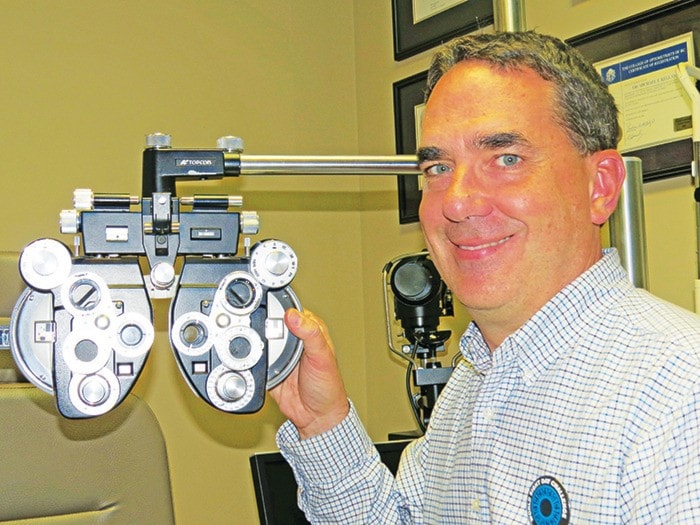Parents are being reminded to take their children to an optometrist for an eye exam during Children’s Vision Month.
One in four school-age children has a vision problem and many of these problems have no obvious symptoms, so there is no way for parents to know if their child is the one, according to Doctors of Optometry Canada. Since children have no point of comparison, most accept their vision as normal because they don’t know any differently. As a result, many children with impaired visual skills can become withdrawn and perform below their potential in school. Some children are even misdiagnosed as having a learning disability, the association notes.
“Research tells us that most parents mistakenly believe that they would know if their child had a vision problem. But the truth is, with no easy-to-detect symptoms, it is impossible to know without an eye exam,” says Dr. Michael Kellam of Vision Arts Eyecare Centre in Ladysmith and Nanaimo.
Children’s Vision Month occurs annually in October and is dedicated to raising awareness of the impact undiagnosed vision problems can have on children’s learning and development.
Kellam, a member of the provincial association’s board of directors, wants to stress the importance of when and how often children should get comprehensive eye exams, which have the ability to test for far-sightedness, not just near-sightedness.
“For me, it’s important kids come in yearly because the eye is still growing, even as a teenager,” he said. “Just because mom and dad’s eyes are fine doesn’t mean the kid’s eyes are good because there may be other issues in the family tree.”
Kellam says they want children to get their first eye exam well before kindergarten, at age three, and if that first test is good, they want them in again when they start kindergarten and then annually while they are in school.
“Visual demand goes up each year,” he noted. “Not only is there the growth factor, but there’s the change in visual demand too.”
Kellam says any children who are struggling with reading or math in school should get their eyes checked because it could be a result of far-sightedness.
“Baseball coaches say you can’t hit it if you can’t see it, but that applies to reading too — if you can’t see it, you can’t read it,” he said.
